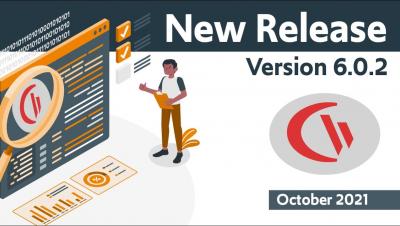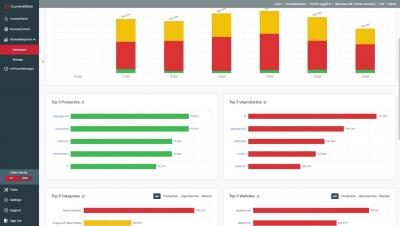Security | Threat Detection | Cyberattacks | DevSecOps | Compliance
October 2021
Guarding Against The Human Element: How Insider-Threat Trends Should Guide Cybersecurity Policy
The number of data breaches has increased every year for more than a decade. Each incident costs companies time, money and resources to repair while inflicting often-irreparable damage to their brand reputation and customer loyalty. This reality only became more apparent during the recent pandemic as threat actors capitalized on the moment’s disruption and uncertainty to wreak havoc on our digital environments. In 2021, the number of data breaches is already on pace to reach a new record high.
New User Activity Data Dashboards for BrowseReporter & More (v6.0.2 Webinar) | CurrentWare
Cyber Security Month in the WFH Era: Three Key Steps to Secure Hybrid Teams
This October, as businesses emerge from the pandemic, many are making strategic decisions about their long-term work arrangements. While there is a substantial debate about remaining remote or bringing people back to the office, many companies are choosing to meet in the middle, embracing a hybrid work arrangement that allows people to work both on-site and remotely.
Employee Computer Activity Data Dashboards - Workforce Analytics Software | BrowseReporter
Secure Socket Shell (SSH) Key Management: Risks, Benefits, and 6 Security Best Practices
4 Cost-effective Cybersecurity Solutions to Enhance Your Defensive Posture Today
October is Cybersecurity Awareness Month, which means that companies are once again surveying the threat landscape. They can’t like what they see. By July 2021, threat actors attempted more than 304 million ransomware attacks, surpassing the 2020 total just halfway through the year. At the same time, the number of phishing scams is soaring, and the cost of a data breach is more expensive than ever before, reaching $4.24 million, according to the most recent industry study.
The Future Of Cybersecurity | 5 Reasons Cybersecurity Deserves Your Attention Today
Already a significant concern before 2021, this year has revitalized cybersecurity as a top priority for every organization. Highly consequential cybersecurity incidents at companies like Colonial Pipeline, Kaseya, and T-Mobile brought front-page coverage to the issue, while cybersecurity attacks on small and medium-sized businesses soared, spreading the reach of threat actors.
Leveraging National Cybersecurity Awareness Month to Reduce Insider Threats
October is a month that generates much buzz amongst the cybersecurity community. It’s National Cybersecurity Awareness Month (NCSAM) – a time when security professionals work around the clock to raise awareness of growing cyber risks amongst general user communities.
Cybersecurity in Higher Education: Understanding the Threats & Adopting A Zero Trust Approach
While there’s no real way to prevent them all, understanding vulnerabilities, common types of cyberattacks and how to prevent them can help college and university leaders prioritize their security strategies to help keep institutional data and students safe.






